Nestled in the heart of Utah’s breathtaking red rock country lies a wonderland of soaring sandstone formations, enchanting slot canyons, and endless vistas. Welcome to Arches National Park, where the forces of wind and water have sculpted a landscape of otherworldly beauty.
With over 2,000 natural stone arches, towering spires, and massive fins, this iconic US national park is a true masterpiece of nature that draws visitors from all corners of the globe. Whether you’re a seasoned hiker, an adventurous rock climber, or simply a lover of awe-inspiring scenery, this park offers endless opportunities for exploration and discovery.
From the fiery hues of sunrise over Delicate Arch to the mystical glow of moonlit hikes through the park’s deep red canyons, this is your ultimate guide to unlocking the history and magic of Arches National Park.
2024 Guide to Arches National Park
Where is Arches National Park?

Located in the western United States, Utah’s Arches National Park sits approximately 5 miles north of Moab, a buzzy adventure hub that attracts outdoor enthusiasts worldwide. The park’s central position in the heart of Utah’s red rock country provides convenient access by car, and visitors can relish awe-inspiring views of the surrounding landscape on the journey to the park.
Facts About Arches National Park

- Arches National Park was established as a national monument in 1929 and was designated as a national park in 1971.
- Home to over 2,000 natural stone arches, Arches National Park contains the largest concentration of arches in the world.
- The park covers an area of 76,679 acres, making it smaller than some of the other famous national parks in the US, like Yellowstone National Park and Yosemite National Park.
- The park’s iconic Delicate Arch is featured on Utah’s license plates and has become a symbol of the state’s natural beauty.
- Arches National Park is located in a region known as the Colorado Plateau, which encompasses parts of Utah, Colorado, Arizona, and New Mexico.
- The park’s sandstone formations were created over millions of years through a combination of erosion, weathering, and geological activity.
- Arches is home to a variety of wildlife, including mule deer, coyotes, kit foxes, and a variety of bird species such as peregrine falcons and golden eagles.
- The park’s night sky is considered one of the darkest and most pristine in the United States, making it a popular destination for stargazing.
- Arches National Park’s Double Arch was featured in the opening scene of the movie Indiana Jones and the Last Crusade.
Indigenous History in Arches National Park

For thousands of years, Indigenous peoples have called the region that encompasses Arches National Park their home. The park sits on ancestral lands of the Ute, Paiute, and Navajo, whose cultural and spiritual roots run deep. Through their traditional hunting and gathering practices, rock art, and other cultural artifacts, these Indigenous peoples have left an enduring mark on the park’s landscape.
Petroglyphs and pictographs can be found throughout the park, just off the Delicate Arch trail, depicting animals, human figures, and other symbols. Arches National Park is an important reminder of the enduring legacy of Indigenous peoples in the American West, and the park’s management works to collaborate with local tribes to protect and preserve this history.
Arches National Park Weather

Arches National Park experiences a desert climate with hot summers and cold winters. During the summer months, temperatures can reach upwards of 100°F (38°C) during the day and drop to around 60°F (15°C) at night. In the winter, temperatures can dip below freezing, and the park can receive snowfall. Spring and fall offer more moderate temperatures, with warm days and cool nights.
Visitors should come prepared for extreme temperature changes and bring plenty of water and sun protection, regardless of the season. Thunderstorms can also occur during the summer months, and flash flooding can be a risk in some areas of the park. Always check the weather forecast and be aware of potential hazards before venturing out on a hike or other outdoor activity!
Arches National Park Hours
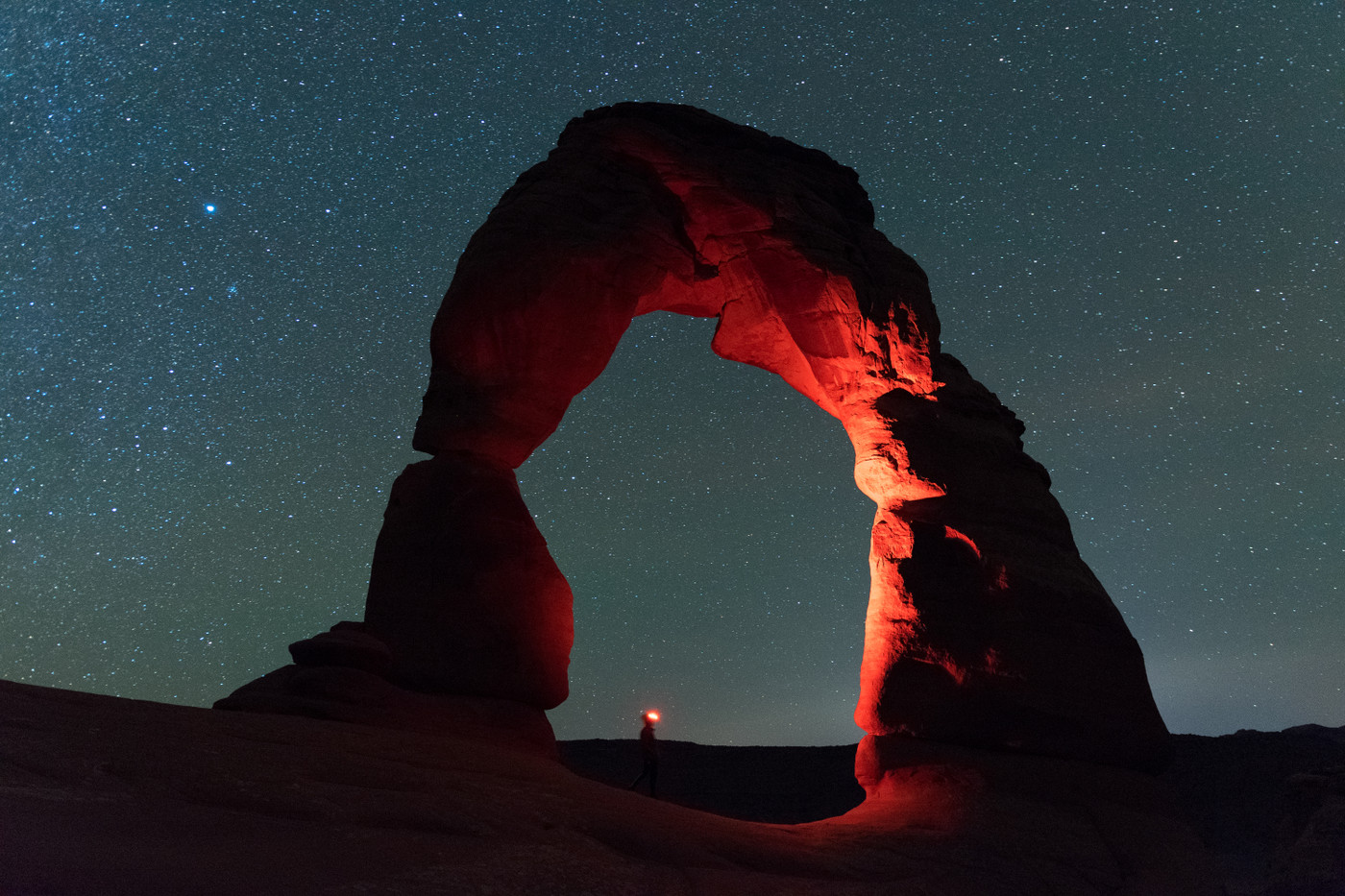
Arches National Park is open year-round, 24 hours a day, although some areas of the park may be closed during certain times of the year due to weather conditions or construction projects. The park’s visitor center is open daily from 9:00 am to 4:00 pm, with extended hours during the peak season from April through October. The park’s campground is also open year-round and offers both tent and RV sites on a first-come, first-served basis.
Visitors are encouraged to check the website or social media pages for the latest updates on park hours and closures before planning their visit. Additionally, visitors should note that the park can become crowded during peak season, and may be subject to capacity restrictions or timed entry during busy periods.
If you’ll be there, join the VanLife Adventure Trail Challenge to win prizes while you explore more outdoors!
Getting to Arches National Park
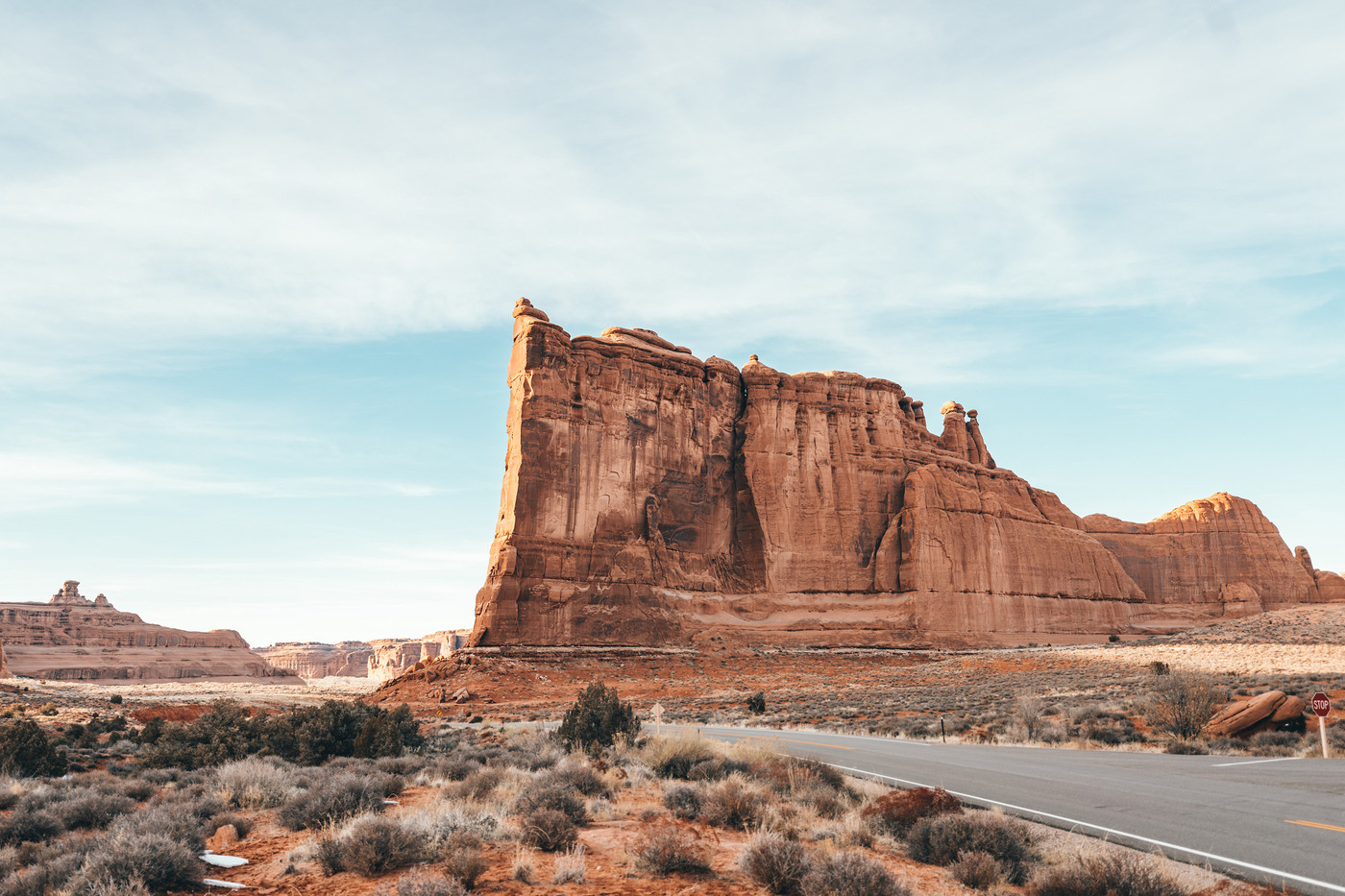
Arches National Park is located in southeastern Utah, about 5 miles north of the town of Moab. The closest major airport is in Salt Lake City, which is approximately 230 miles away. Visitors can also fly into the Grand Junction Regional Airport in Colorado, which is about 110 miles from the park. The most popular way to get to Arches National Park is by car, and visitors can take Highway 191 north from Moab to the park entrance. Note that there is no public transportation available inside the park, and private vehicles are the only way to access many of the park’s trails and viewpoints.
Arches National Park Entrance Fee

The entrance fee for a private vehicle entering Arches National Park is $30, which is valid for seven days. Visitors can also purchase an annual pass (America the Beautiful Pass) for $80, which provides access to all national parks and federal recreation areas throughout the United States.
Arches National Park Visitor Center

Located at the entrance the park, Arches National Park Visitor Center is a one-stop-shop for visitors seeking information, exhibits, and educational programs. Here, visitors can acquire maps, brochures, and other resources to help plan their visit. The center also features various exhibits on the park’s geology, ecology, and history, as well as interactive displays for all ages.
Ranger-led programs, such as guided hikes, talks, and other activities, are offered throughout the year, providing visitors with an opportunity to learn more about the park’s natural and cultural resources. The visitor center is open daily from 9:00 am to 4:00 pm, with extended hours during the peak season from April through October.
State and National Parks Near Moab

Think you’ve seen enough of Arches National Park? Just wait, there’s more. Arches is surrounded by countless stunning Utah national parks, offering visitors the opportunity to explore a diverse range of landscapes and natural wonders.
Canyonlands National Park, located about 30 miles southwest of Arches, offers visitors views of canyons, mesas, and buttes, and opportunities for hiking, camping, and exploring off-road trails.
Capitol Reef National Park is located about 140 miles southeast of Arches, and offers visitors a chance to explore a diverse range of geological formations, including canyons, cliffs, and colorful sandstone formations.
Bryce Canyon National Park, located about 235 miles southeast of Arches, is home to a unique landscape of hoodoos, or rock spires, which are illuminated by sunlight in a stunning display of color at sunrise and sunset.
And finally, Zion National Park, located about 285 miles southwest of Arches, is home to towering sandstone cliffs, narrow slot canyons, and verdant forests, and offers visitors a range of recreational activities, from hiking and rock climbing to birdwatching and stargazing.
Hiking in Arches National Park

Arches is home to over 2,000 natural stone arches and a variety of trails that offer visitors the chance to explore the park’s stunning natural beauty up close. With proper planning, visitors can safely explore the beauty and diversity of Arches National Park on foot. Here’s a list of 15 of our favorite hiking trails in Arches National Park:
Easy hikes in Arches National Park (perfect for families):
- Park Avenue Trail – A one-mile trail that offers a scenic walk through a towering canyon.
- Balanced Rock Trail – A 0.3 mile loop trail that leads visitors around a massive balancing rock formation.
- Sand Dune Arch Trail – A 0.3-mile trail that leads visitors to a secluded sandstone arch and a sandy play area for kids.
- Double Arch Trail – A 0.6-mile round trip hike that leads visitors to a unique double arch formation.
- Broken Arch Trail – A 1.7-mile round trip hike that takes visitors through a secluded canyon and past a beautiful natural arch.
Moderate hikes in Arches National Park (fairly strenuous):
- Delicate Arch Trail – A 3-mile round trip hike that leads visitors to the park’s most famous natural arch, offering stunning views of the surrounding landscape.
- Landscape Arch Trail – A 1.9-mile round trip hike that leads visitors to one of the longest natural arches in the world.
- Tower Arch Trail – A 3.4-mile round trip hike that leads visitors to a secluded natural arch and tower formation.
- Fiery Furnace Trail – A challenging, 2.1 mile off-trail hike that requires a permit and offers visitors a chance to explore a maze of narrow canyons and towering rock formations.
- Corona Arch Trail – A 1.5-mile round trip hike that leads visitors to a massive natural arch formation
Hard hikes in Arches National Park (experience recommended):
- Devil’s Garden Trail – A 7.2-mile loop trail that offers visitors a chance to explore a variety of arches, including the Landscape Arch, Tunnel Arch, and Pine Tree Arch.
- Elephant Butte Trail – A 1.5-mile round trip trail that leads to a towering sandstone spire with panoramic views of the surrounding landscape.
- Klondike Bluffs Trail – A 13-mile round trip hike that offers visitors a chance to explore a remote area of the park, featuring unique rock formations and stunning views.
- Dark Angel Trail – A 4.7-mile round trip hike that leads visitors to a towering rock formation known as the Dark Angel.
- Poison Spider Trail – A challenging 10.6-mile round trip hike that takes visitors through a rugged canyon and past a natural arch and towering rock spires.
Lodging Near Arches National Park

Arches National Park is one of the top-visited national parks in the US, attracting roughly 1.5 million tourists each year. The town of Moab, located just a few miles from the park entrance, has a variety of accommodations ranging from budget-friendly motels to upscale resorts. There are also several campgrounds located within the park, including the popular Devils Garden Campground, which offers tent and RV camping. Visitors should note that lodging can fill up quickly during peak season, so it’s recommended to book in advance.
Camping in Arches National Park
Camping is a popular way to experience the stunning natural beauty of Arches National Park and the surrounding areas. Whether you prefer tent camping or RV camping, there are several options available both within the park and in the nearby town of Moab. Camping in Arches National Park offers a unique opportunity to immerse yourself in the rugged desert landscape, with the chance to stargaze under the clear night sky and wake up to stunning sunrises over the iconic rock formations. While camping in the park can be a rustic experience, visitors can also take advantage of amenities like running water, flush toilets, and campfire rings.
Get more ideas from leah on
Hotels Near Arches National Park
With a wide range of options from budget-friendly motels to luxury resorts, there is a hotel to fit every traveler’s needs and budget, here. Whether you’re looking for a hotel with easy access to park attractions, or a peaceful retreat surrounded by natural beauty, we’ve got you covered.
Get more ideas from leah on
Arches National Park Tours
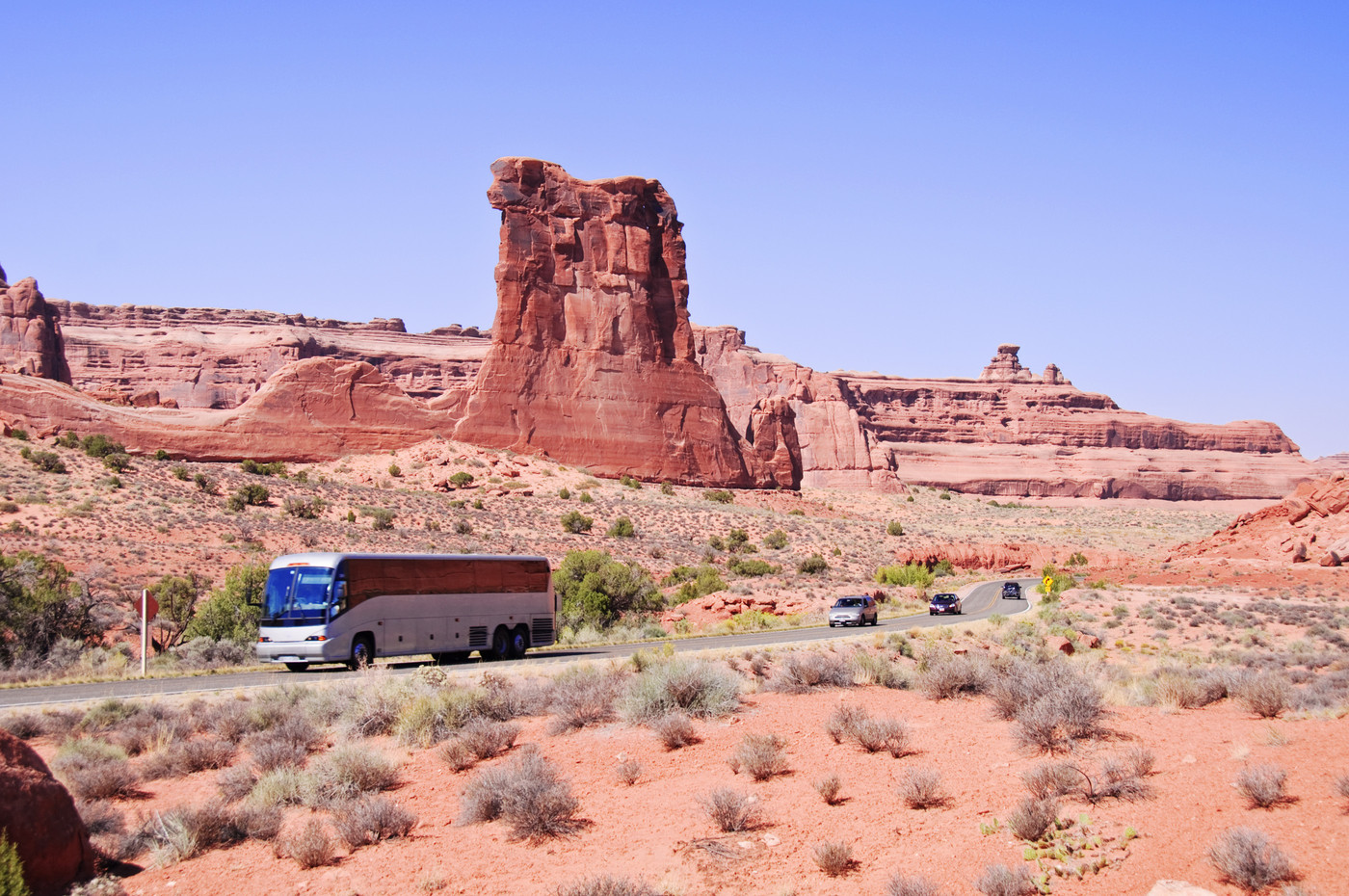
Arches National Park offers a variety of guided tour options for visitors who want to enhance their experience and learn more about the park’s history, geology, and ecology. Companies like Moab Adventure Center and Red River Adventures offer a variety of guided hikes in Arches National Park, ranging from easy family-friendly hikes to more strenuous ones for experienced hikers. For a more adventurous day, visitors can book a 4×4 tour with companies like Canyonlands Jeep and Car Rentals or Hell’s Revenge Jeep Tours. These tours take visitors off-road and into some of the park’s more remote areas. Arches National Park is known for its dark skies and stunning starry nights, making it a great destination for stargazing. Companies like Red Rock Astronomy offer guided stargazing tours where visitors can view constellations, planets, and other celestial objects through telescopes.
The Best Things to in Arches National Park
Arches Scenic Drive

Arches Scenic Drive is a 36-mile long road that winds through the heart of Arches National Park, providing visitors with stunning views of the park’s iconic arches, rock formations, and expansive landscapes. The road begins at the park entrance and passes by many of the park’s most popular sites, including Balanced Rock, Delicate Arch, and the Windows Section. Along the way, there endless pullouts and overlooks where visitors can stop to take photos, enjoy a picnic, or simply take in the views.
Park Avenue Trail
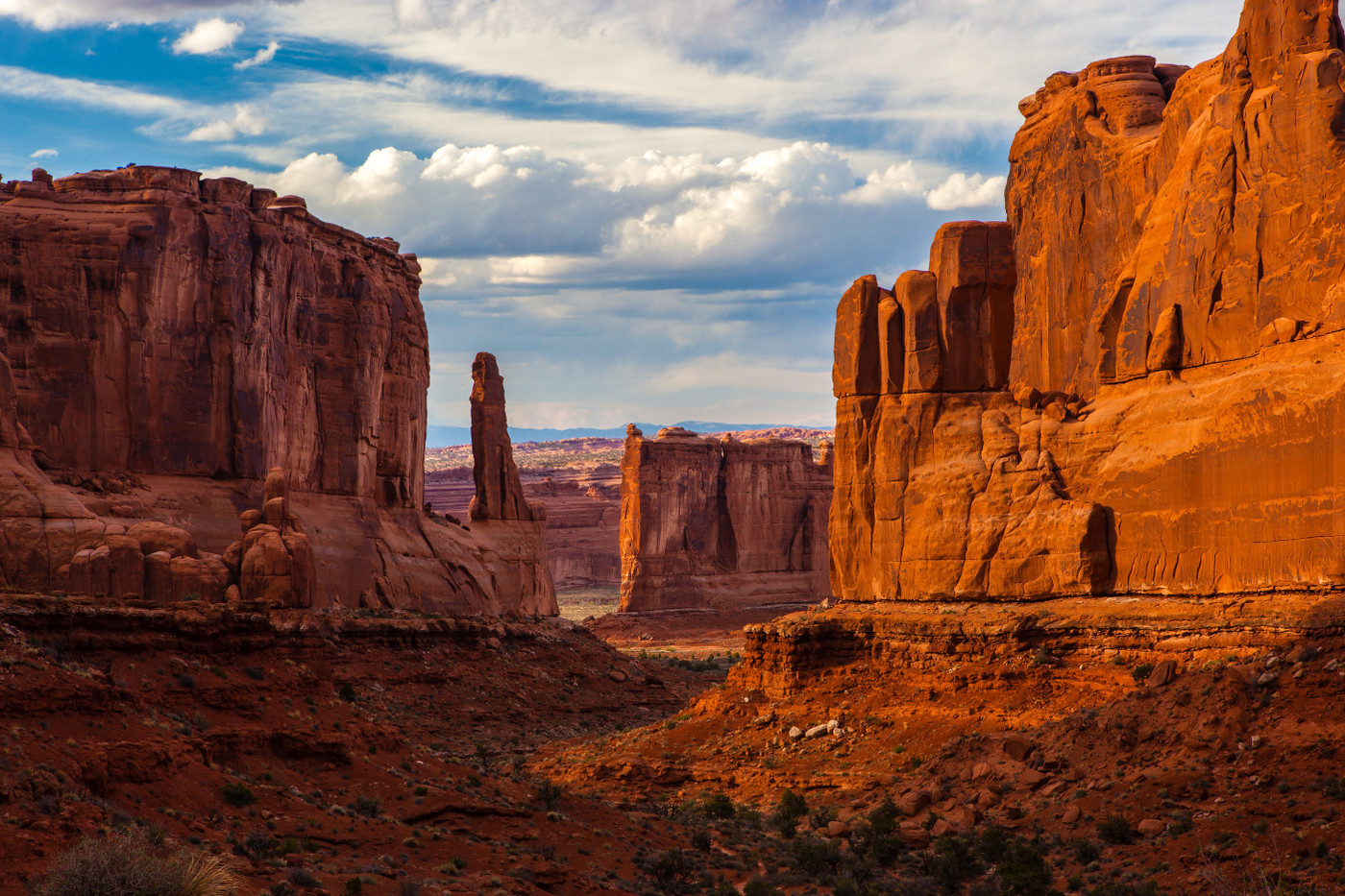
Park Avenue Trail is a super popular hiking trail that offers visitors the opportunity to explore some of the park’s most dramatic rock formations up close. The trail begins at the Park Avenue Viewpoint and descends steeply into a canyon, winding through towering sandstone walls and past formations such as Courthouse Towers and Queen Nefertiti. The trail is 2 miles roundtrip and is rated as moderate, with some sections of steep inclines and uneven terrain. Hikers are rewarded with stunning panoramic views of the canyon and rock formations throughout the hike.
La Sal Mountains Viewpoint

A scenic overlook located in Arches National Park, La Sal Mountains Viewpoint offers visitors stunning views of the surrounding mountain range. The viewpoint is located on the eastern edge of the park and is easily accessible via a short hike from the parking lot. From the viewpoint, visitors can see the majestic peaks of the La Sal Mountains rising in the distance, contrasting sharply with the red rock formations of the park. The viewpoint is particularly stunning at sunrise or sunset, when the mountains are bathed in golden light
Balanced Rock
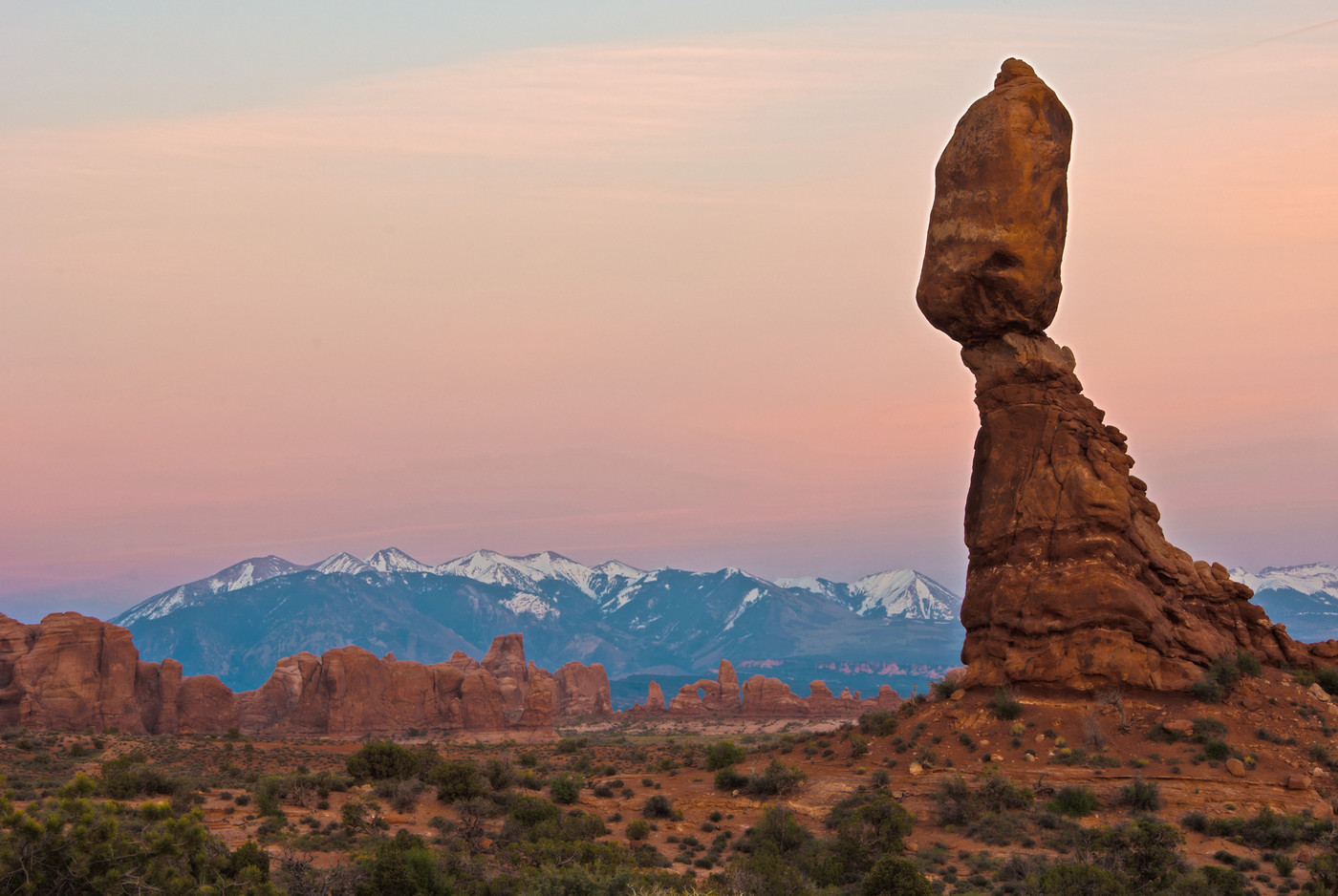
Balanced Rock is one of the most iconic rock formations in Arches National Park, and a must-see for any visitor to the park. The formation consists of a large sandstone boulder perched precariously on top of a narrow pedestal, creating a striking and unique sight. The rock stands over 39 feet tall, with the boulder weighing over 3,600 tons. Balanced Rock is easily accessible via a short trail from the parking lot.
The Windows and Turret Arch
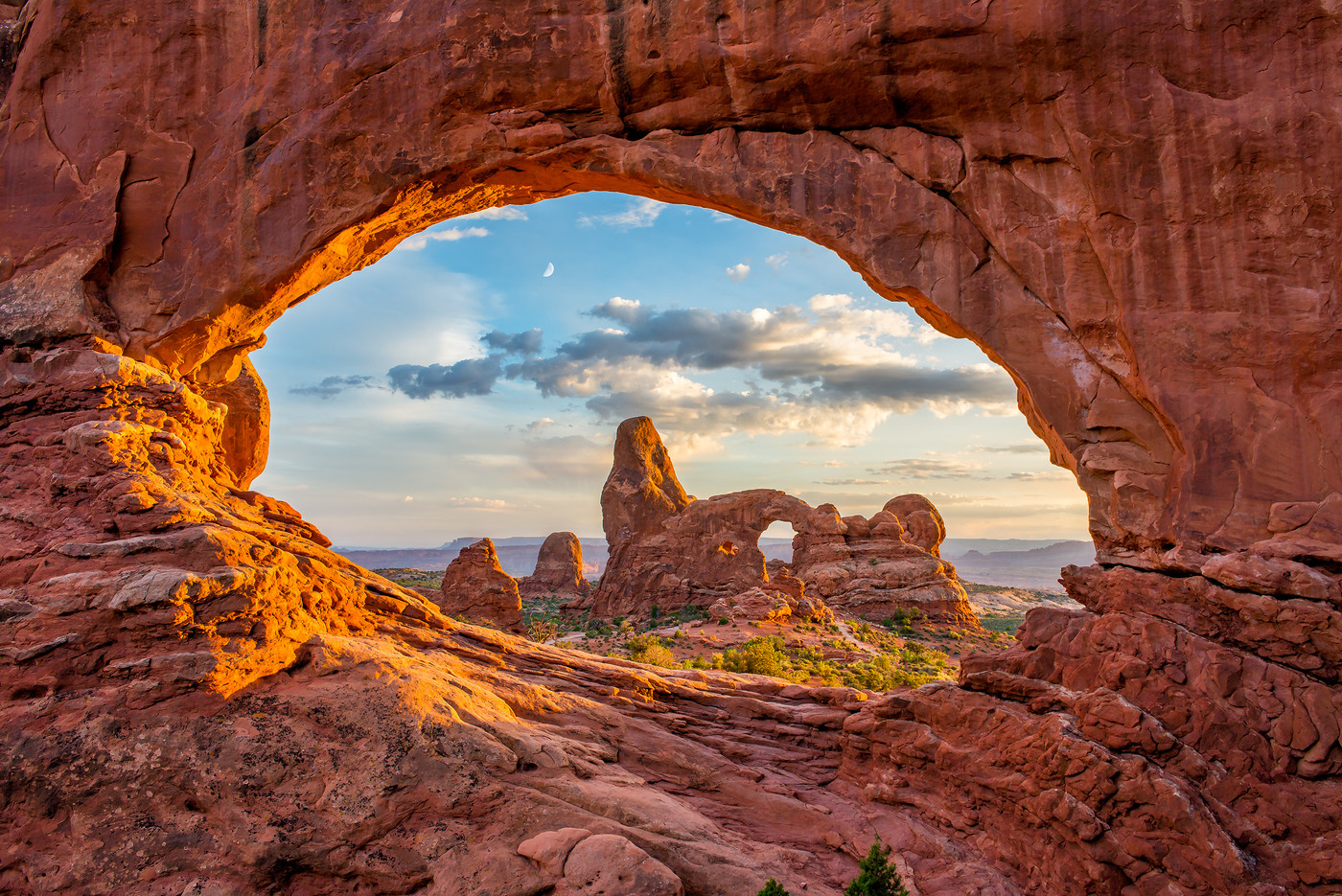
The Windows and Turret Arch are two of the most popular and recognizable rock formations in Arches National Park. The Windows, also known as the Spectacles, are a pair of massive arches that are easily accessible via a short hike from the parking lot. The arches provide stunning views of the surrounding red rock formations and are particularly beautiful at sunrise and sunset. Turret Arch is located nearby and is also easily accessible via a short hike. The arch is named for its unique shape, which resembles a turret or castle tower. Visitors can walk through the arch and explore the surrounding area, which includes several smaller arches and stunning rock formations.
Double Arch
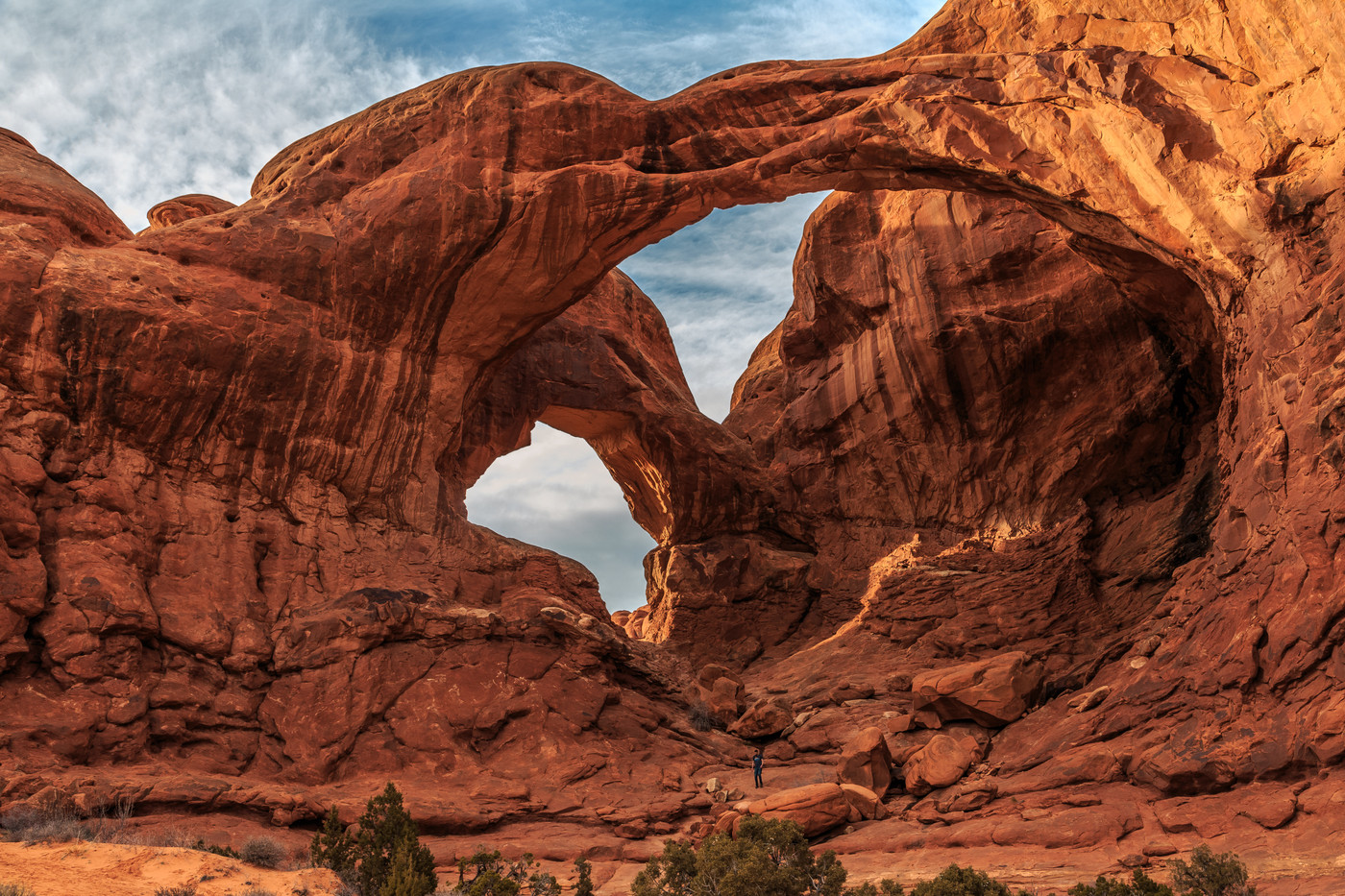
Double Arch is a magnificent rock formation located in Arches National Park. As its name suggests, it consists of two massive arches that intersect at a 90-degree angle, creating a striking and unique sight. The arches were formed by millions of years of erosion and weathering, and the resulting shape is both impressive and beautiful.
Garden of Eden

The Garden of Eden is a striking rock formation located in Arches National Park that has captured the imaginations of visitors for years. This unique formation is made up of towering rock spires that seem to reach towards the sky, each one bearing intricate patterns etched into its surface. The Garden of Eden is best experienced by taking a hike along the primitive trail, which winds through the towering rock formations and offers stunning views of the surrounding area.
Hike to Delicate Arch
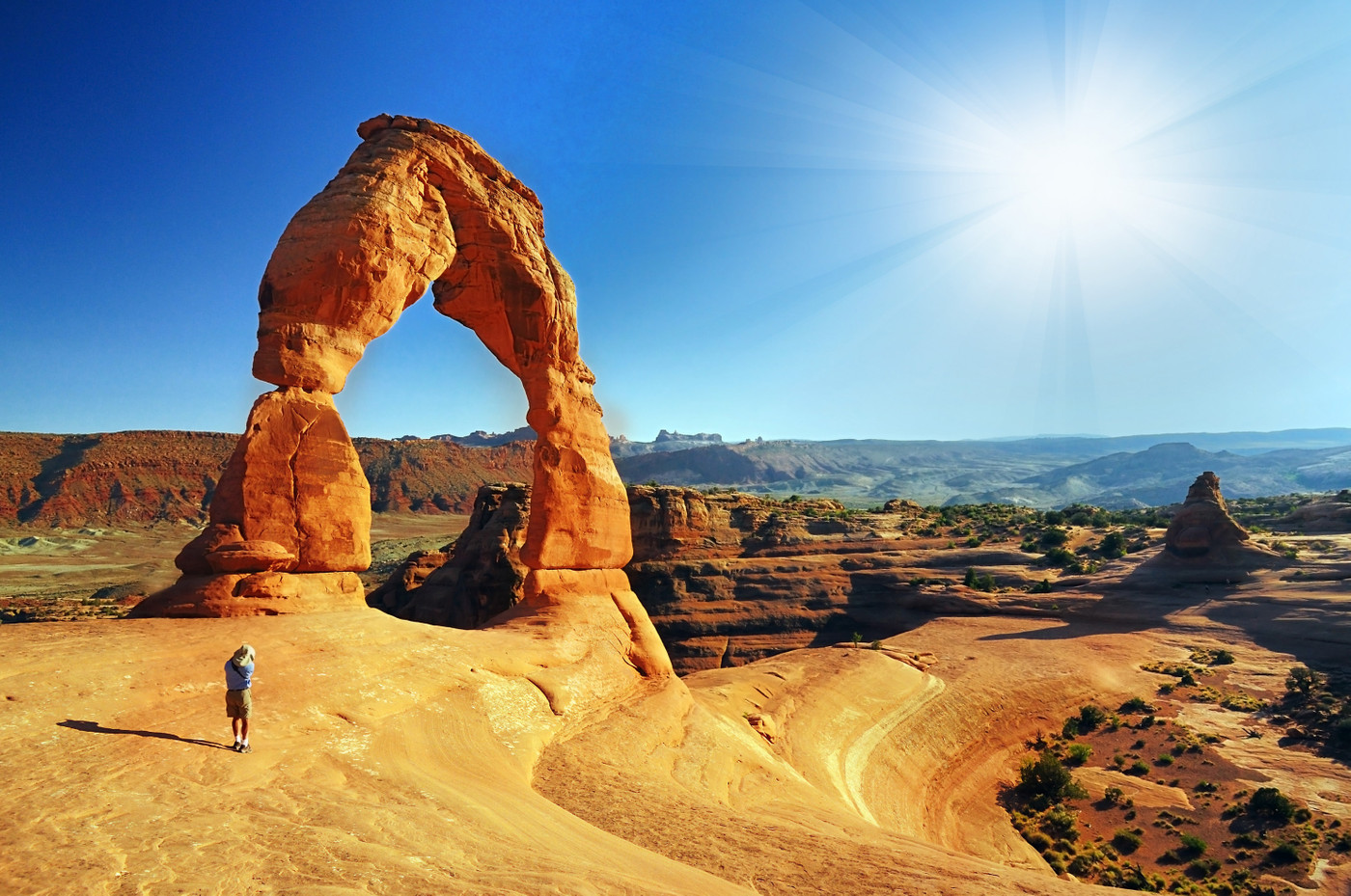
Delicate Arch is the iconic symbol of Arches National Park, and its stunning beauty draws visitors from all over the world. The hike to Delicate Arch is a moderately strenuous 3-mile round trip trek that takes visitors through a breathtaking landscape of red rock formations and sweeping vistas. As you hike, the trail gradually gains elevation and offers stunning views of the surrounding mountains and canyons. The final approach to Delicate Arch is a bit steep, but the reward is worth the effort – a breathtaking view of the arch as it rises majestically from the rock formation.
Upper Delicate Arch Viewpoint
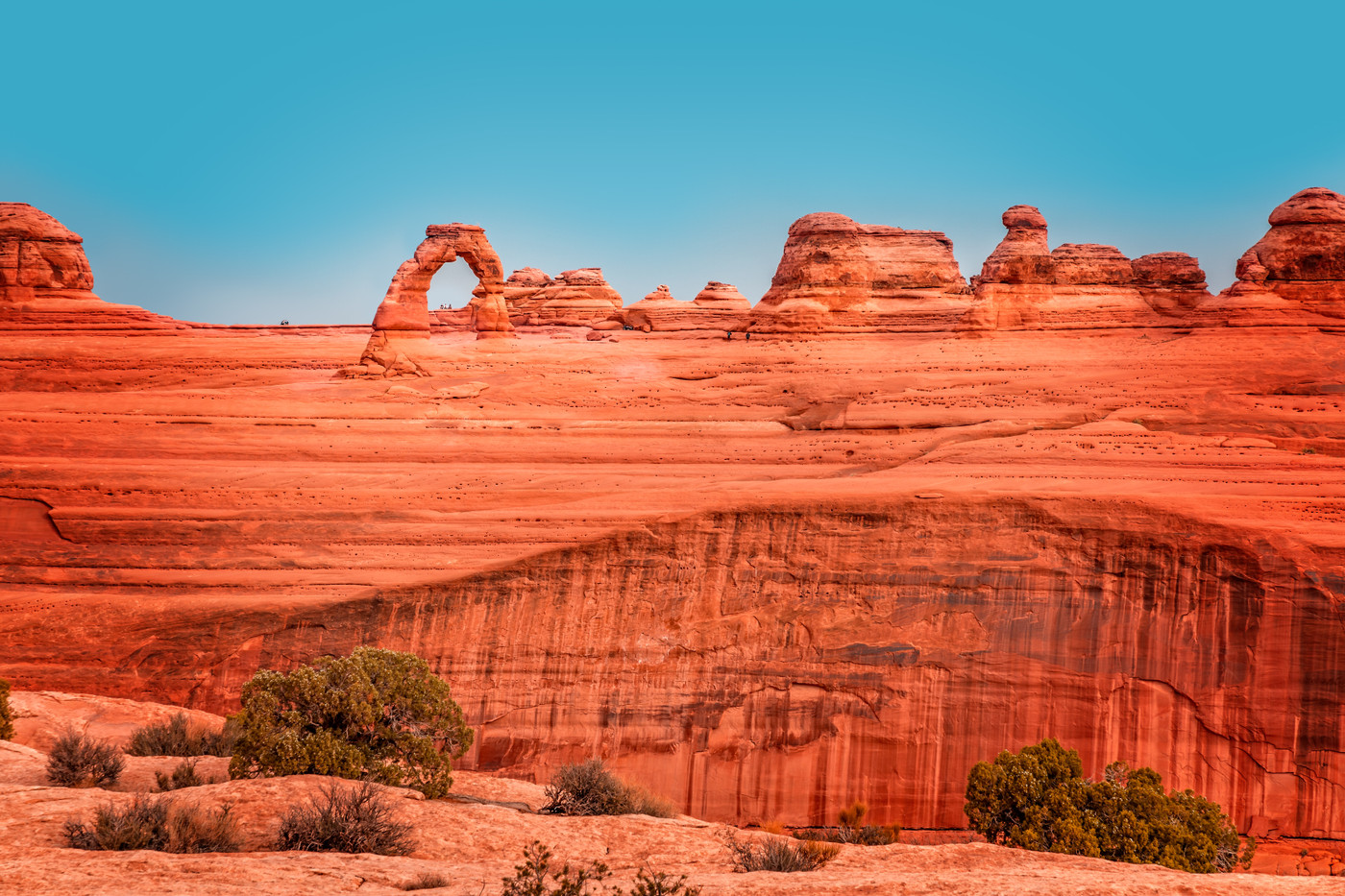
The Upper Delicate Arch Viewpoint is a hidden gem in Arches National Park that offers a unique perspective of the iconic Delicate Arch. This viewpoint is located at the end of a short, steep trail that starts near the Delicate Arch trailhead. The viewpoint is about 200 feet above Delicate Arch and offers a breathtaking panoramic view of the surrounding landscape. From this vantage point, visitors can see the vast expanse of the park and the towering mountains in the distance. The Upper Delicate Arch Viewpoint is a great alternative for those who want to see Delicate Arch but may not be up for the longer, more strenuous hike to the arch itself. This viewpoint is definitely worth the short detour, and the incredible views will leave visitors in awe.
Fiery Furnace
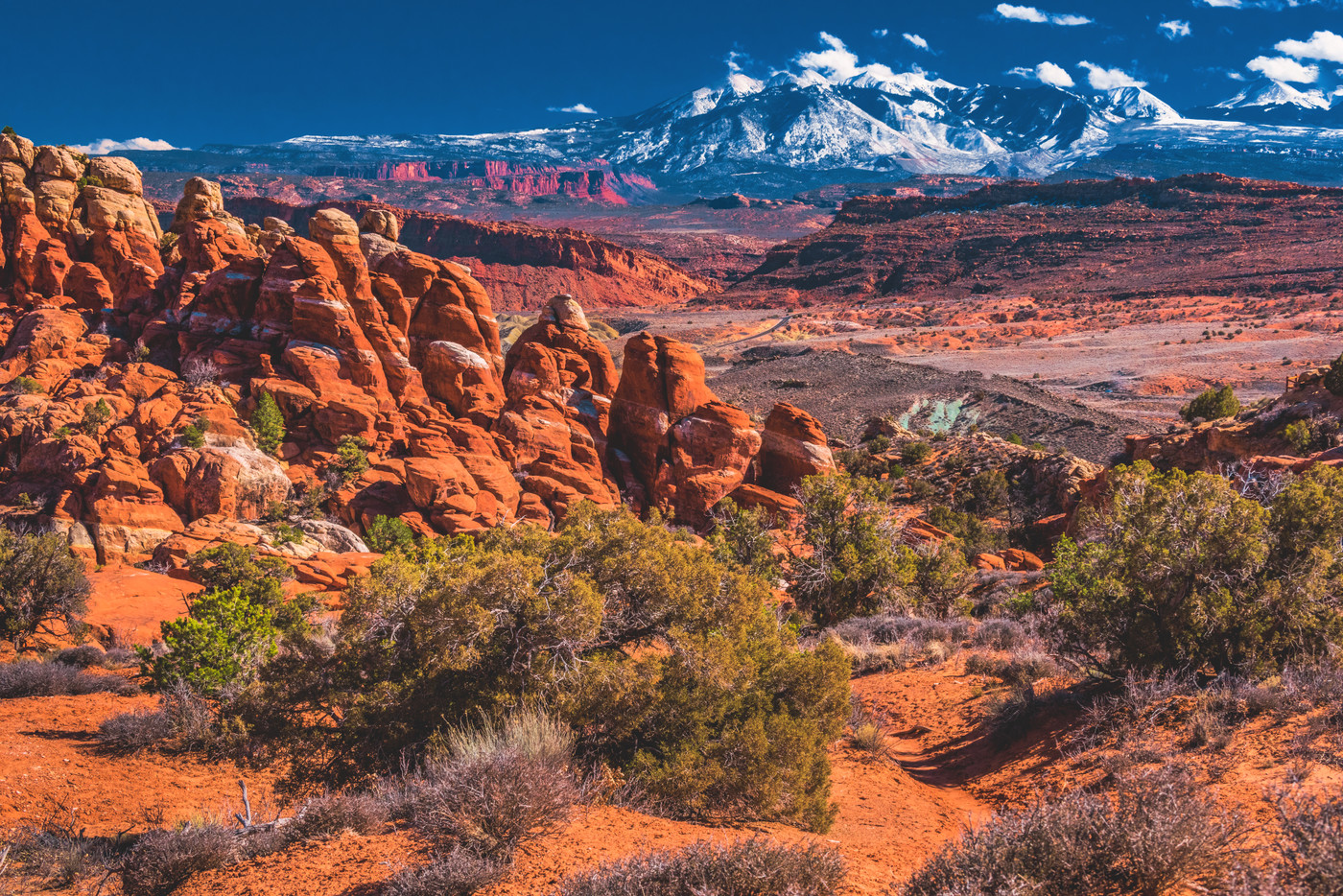
Fiery Furnace is a labyrinth of narrow canyons, towering sandstone walls, and unique rock formations that offer a challenging yet rewarding adventure for hikers. This trail is a popular destination in Arches National Park for those who seek a more challenging and off-the-beaten-path experience. Visitors must obtain a permit and watch a safety video before embarking on the hike, as the route can be difficult to navigate without a guide. The Fiery Furnace trail offers stunning views of the park and provides opportunities to see wildlife such as bighorn sheep, lizards, and birds.
The Devils Garden and Landscape Arch

The Devils Garden is a popular area in Arches National Park, with a variety of hiking trails that lead to impressive natural wonders. The most famous of these is Landscape Arch, a thin and delicate arch that spans over 290 feet, making it one of the longest arches in the world. Visitors can hike along a well-maintained trail that leads to Landscape Arch and continue on to explore other arches and rock formations in the area. The Devils Garden is also home to other noteworthy arches such as Double O Arch, Navajo Arch, and Partition Arch. The trail can be challenging in some areas, with steep inclines and narrow ledges, but the stunning views and unique rock formations make it a must-visit destination in Arches National Park.
Skyline Arch

Skyline Arch is a beautiful and unique natural wonder in Arches National Park. Though relatively small compared to some of the other arches, its location on the side of a steep sandstone cliff creates a stunning and picturesque setting that is not to be missed. Visitors can easily reach the arch via a short hike and enjoy breathtaking views of the arch and the surrounding area from an overlook.
Tapestry Arch

Tapestry Arch is one of the lesser-known arches in Arches National Park, but it is no less impressive than its more famous counterparts. The arch gets its name from the intricate and colorful patterns in the sandstone surrounding the arch, which look like a woven tapestry. The arch is not visible from any road or parking lot, and requires a moderate hike to reach, making it a great choice for those who want to get away from the crowds and experience some of the park’s more hidden gems. Once there, visitors can take in the stunning views of the surrounding canyon and the intricate details of the arch itself.